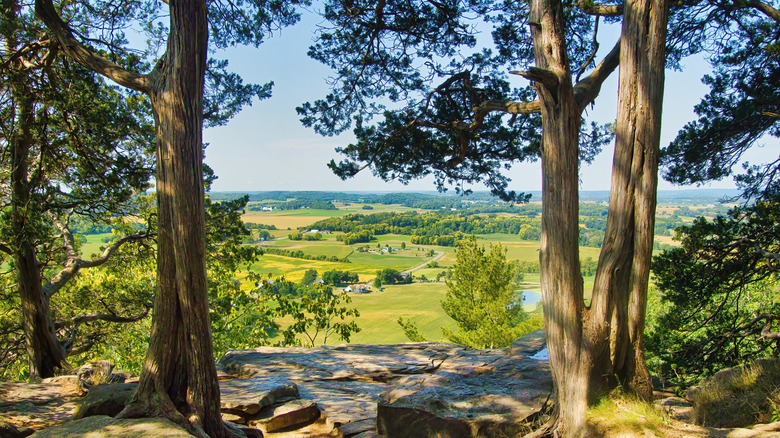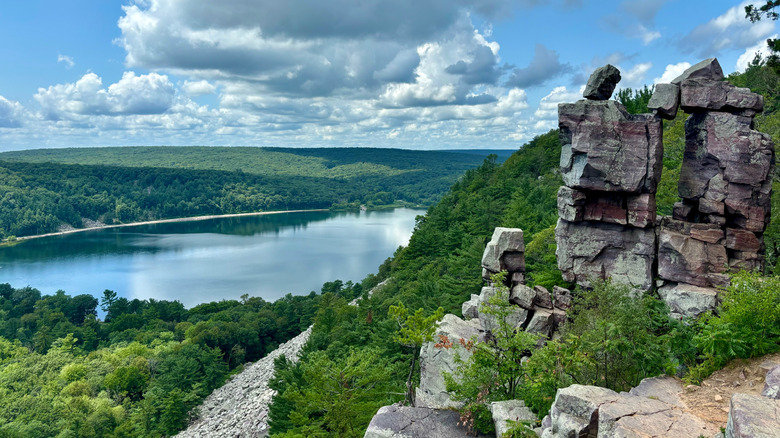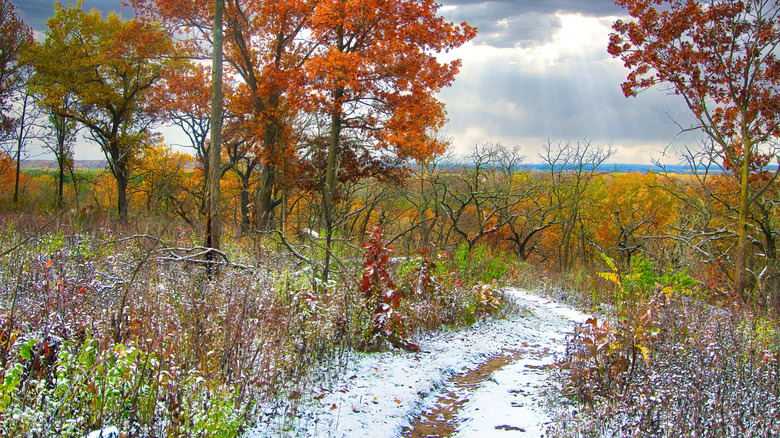Wisconsin's Trail Near Milwaukee Winds For A Thousand Scenic Miles Through The Footsteps Of Woolly Mammoths
One of the most rewarding long-distance hikes in the U.S. probably isn't on your radar, but it really should be. Covering 1,200 miles across 30 counties and 60 towns in Wisconsin, the Ice Age National Scenic Trail takes hikers through some of the best-preserved glacial remnants in the world that date back 12,000 years. This unique trail follows the path of the last continental glacier to cover Wisconsin (and North America as a whole, for that matter), showcasing prairies, old-growth forests, and lakes where woolly mammoths, giant beavers, and sabertooth tigers once roamed.
Lifelong hiker Barney Scout Mann paints a vivid picture of the long-haul route via Backpacker, describing it as "an Alice in Wonderland-esque adventure along wooded paths, across bridges and country roads, and through towns with some of the friendliest trail angels and locals you're ever likely to meet." With a description so enticing, it's easy to see why every year, 2.3 million visitors backpack, snowshoe, cross-country ski, and generally just enjoy the outdoors on the Ice Age National Scenic Trail.
The trail starts at Interstate State Park in St. Croix Falls and ends in Potawatomi State Park in Sturgeon Bay, a waterfront Wisconsin city offering a mecca of Midwest beauty and adventure in Door County. It's maintained in large part by volunteers in cooperation with the National Park Service (NPS) and other groups. The Ice Age Trail Alliance makes it easy for anyone to help out with the maintenance of the trail, with volunteers accepted on projects that range from habitat restoration to guided hikes.
How to hike the Ice Age National Scenic Trail
Because of its intensity, it's unlikely that you'll be able to hike the entire Ice Age National Scenic Trail — unless, perhaps, you're the kind of hardcore adventurer who's also researching the best time of year to hike the Appalachian Trail in its full 2,190-mile stretch. For more easy-going hikers, you'll be pleased to know that the route is divided into 100 segments, allowing you to get a good feel of the trail without dedicating months to exploring the entire track. Each section ranges in length, with the shortest section only spanning one mile and the longest stretching out to 15 miles. Connections to rural roads and other man-made paths make up an intricate network that spans the full 1,200 miles.
For postcard-worthy fall foliage or wildflower-covered prairies, visit Kettle Moraine State Forest. Over 30 miles of the trail with five backpacking shelters cut through the northern unit, but the beginner-friendly six-mile stretch starting near Mauthe Lake and ending at Shelter Number 3 (the Dundee Shelter) is particularly rich. You'll encounter glacially-carved kettle lakes, wetlands, and thick maple canopies. The shelter features a pit toilet and a fire ring, but please remember to carry out all your garbage before leaving. Kettle Moraine State Forest is a stop along Wisconsin's most vibrant fall drive, connecting six charming counties, and is only a 45-minute drive from Milwaukee.
Hikers in search of a challenge won't be disappointed by the Ice Age Trail segment at Devil's Lake State Park. This 13-mile section heads into the bluffs surrounding Devil's Lake. It reveals views of the water and red and orange treetops from Devil's Doorway that are worth the climb. The drive from Madison will take about 45 minutes, making it a doable day trip.
The best time to hike the Ice Age National Scenic Trail
Whether you tackle a smaller segment of the trail or embark on a multi-night journey, late spring through mid-fall is the most popular time to discover the Ice Age National Scenic Trail. The weather is fairly dry during this stretch, and the trees display dense green canopies or come alive with autumn colors. The late winter and early spring months are referred to as "mud season," and true to their name, May through March brings puddly, slippery, and gunky conditions. Waterproof hiking boots and trekking poles will be your best friends.
During hunting season (roughly October to April), hikers need to stay up to date about which sections allow hunting and hiking in the same space. If hunting is permitted, make sure to wear bright orange or another color that ensures you will be extremely visible. This same rule applies to pets. The winter months bring temperatures that dip below freezing and plenty of snow underfoot. Consider hiking with a buddy and start your hike early in case the journey takes longer than you anticipated. Remember, the sun starts to go down much earlier during the winter months, which can make conditions along the way more treacherous.
Both the National Park Service and the Ice Age Trail Alliance offer resources, including maps and regional itineraries, to help you plan a trip that meets your needs and expectations. Before hitting the road, check for trail advisories and closures posted on the Ice Age Trail Alliance website. You can also find trail shuttles offered by kindhearted regional volunteer chapters.


